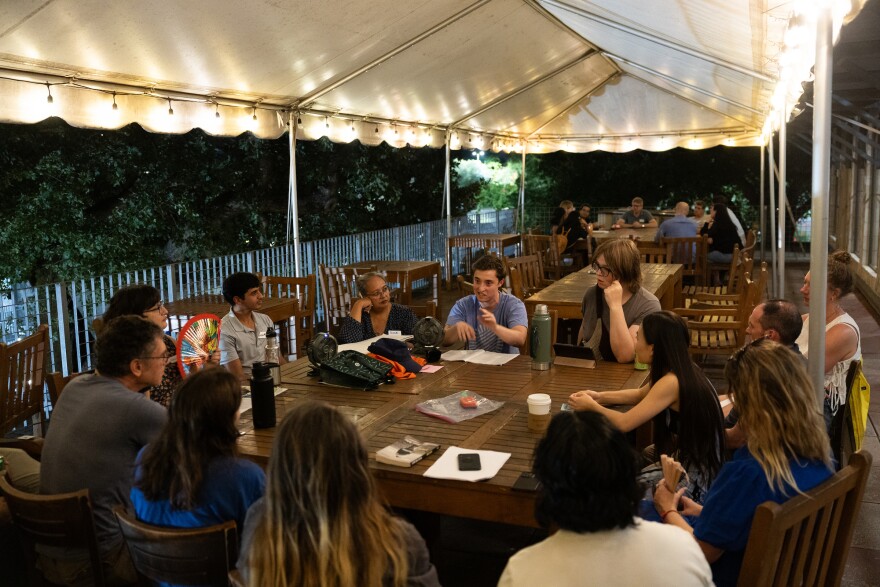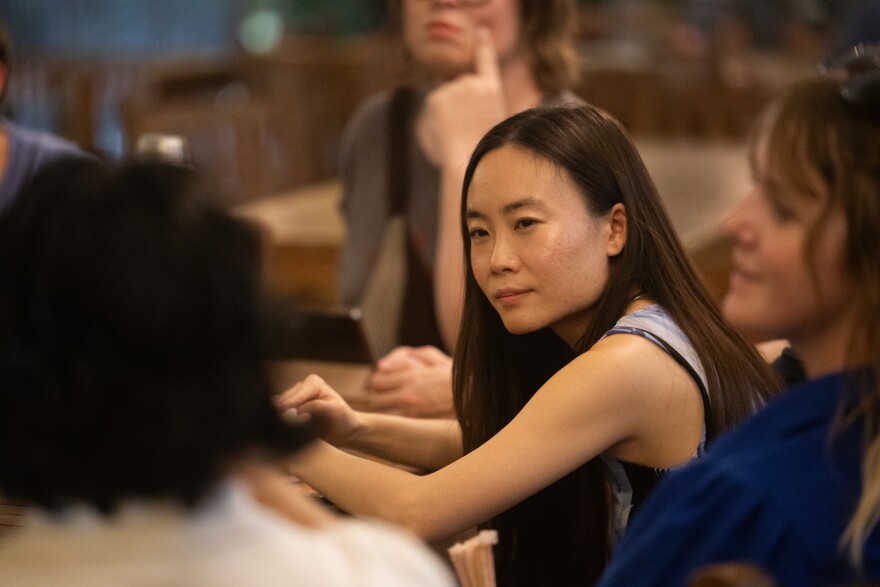Every Tuesday, Nabeel Khan wrangles me and a group of about 25 other literary nerds to create a mock New Yorker editorial board.
“The premise of the group is to have people read a piece of short fiction and exchange their own ideas,” said Khan, the organizer of The New Yorker Weekly Short Story Club.
Attendees spend the first hour of each week’s meeting reading the story and socializing. Then they engage in a literary ritual.
“Each person has to say two words that they had thought about while reading the story,” Khan said. “Having two words is a great icebreaker for people to really start thinking.”
Some people use the opportunity to summarize the story, while others give a two-word review of the piece.
From there, a member of the group will read a recap of the story before the club splits off into two or three smaller groups for discussion. Members are free to analyze, criticize or simply react to the story they read.
“I come in and think, 'OK, I just need to be silent for a while and listen to people's opinions,’” Rob Reynolds said, “but eventually I get right in the fray and start arguing.”

Pieces published in The New Yorker generally range from 10 to 30 pages and fall under the category of literary fiction, a genre that focuses on character depth and psychological realism over extravagant plot lines.
Literary fiction is known for having unconventional narrative structures, ambiguous endings and more thematic complexity.
Georgina Petronella has been a member of the group for about two years. She said her favorite story she’s read with the club is "We’re Not So Different, You and I" by Simon Rich.
“It's about a supervillain named Death Skull who is lonely and wants to make friends,” she said. “It does a great job of being very funny and also talking about millennial loneliness.”
Although The New Yorker specializes in moody and introspective storytelling, it doesn’t exclusively publish literary fiction. Occasionally, the magazine will run a story with an eventful and exciting plot.
Sara Paolozzi, a writer who has attended the group for months, said her favorite story she’s read with the group is "Love of My Days" by Louise Erdrich.
“I already was a fan of hers when I read the piece, so I might have come in a little biased, but it was a Western,” she said. “It’s about a robbery.”

The meetings aren’t about coming to grand conclusions; the goal is to explore ideas and geek out on literature.
“Everybody is coming from a different viewpoint and has a very unique way of looking at things,” Khan said. “So everybody's bringing something different to the plate.”
After about 45 minutes, the breakout groups reconvene, compare notes and then make a final judgment.
“We pretend to be the editors of The New Yorker,” Khan said, “and we vote whether we would like to publish [the story] or not.”
One by one, the members go around and vote, explaining their decision if they feel the need to. At the end, somebody tallies up all the votes and announces the outcome.
“People do get exercised about it quite a bit,” Khan said. “They get very enthusiastic."
The New Yorker Weekly Short Story Club has been around since the end of 2022. On average, the fake editorial board approves 75% of stories to run.
“Voting is kind of like a silly exercise,” Khan said, “but it actually helps conclude our meetings on a very high note.”
The club meets to discuss and understand the stories, but its purpose extends beyond literature.
“It's like meeting every week with a family you know nothing about, talking about the deepest subjects,” said co-organizer Celeste Chamaa. “It's an awesome group.”
The New Yorker Weekly Short Story Club meets every Tuesday at 7 p.m. at the Central Market on North Lamar.







